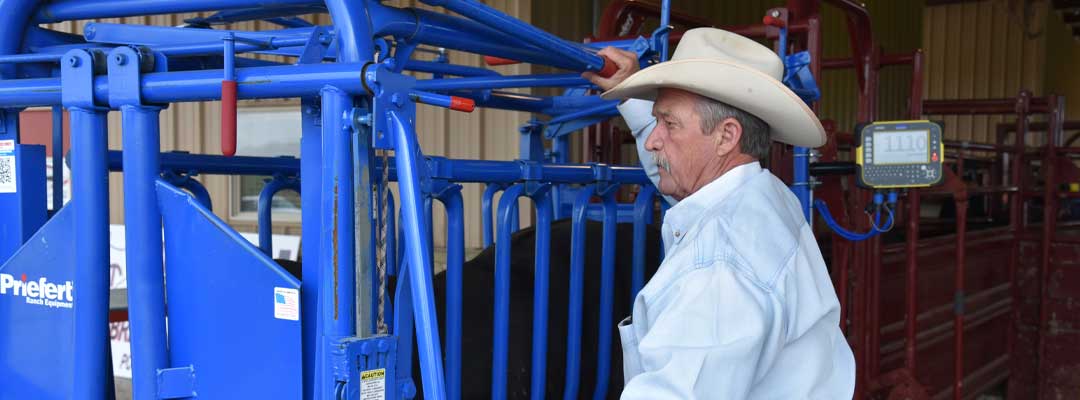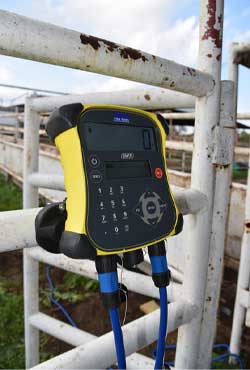Weighing the Options About Livestock Scale and Cow Scale Systems
There?s a lot to gain by using cattle scales. Learn the importance of cattle weighing scales, from Valley Vet and Datamars, the company that manufactures Tru Test Scales.

Livestock scales play a weighty role in our cattle operations -- disease traceability, judicious use of antibiotics and consumer demands spur the need for them more than ever. Join in on this conversation with Arnold Nagely, DVM, CEO and co-founder of Valley Vet Supply, as well as Todd Tieperman and Joe Nerud from Datamars livestock management systems, the company that manufactures Tru Test Scales, as they discuss how livestock scale systems are invaluable for cattle feeders, helping meet the considerable demands they are up against. Join in on the conversation below
HOW HAVE SCALE SYSTEMS CHANGED OVER THE YEARS?
TODD: With the changes made to scale systems, we are stepping into the future. No one is carrying a flip phone or bag phone anymore, and most people haven’t heard of party lines. We’re moving forward; it’s all part of sustainability. In the past, weights were used simply for a monetary transaction. As we evolve from old slag weights, we’re becoming more digital, allowing us to get individual weights. And while we still use weights as a group to sell on, individual animal weights give us data to actually manage with. By digitizing the systems, we can provide judicious use of antibiotics, improve the performance of our cow herds and cattle buyers, and monitor individual pasture and lot performances. Necessity is the mother of invention.”
JOE: As cattle feeders have moved forward, they’ll benefit from having more information to manage with, as their profits are tighter. Livestock scale systems are one of those tools giving them access to weights and tracking of daily gains, and more.”
WHAT IS THE BENEFIT OF HAVING INDIVIDUAL WEIGHTS?
TODD: One mission more heightened now than ever is ‘Judicious use of antibiotics,’ but it’s hard to be judicious with our antibiotics without knowing what an animal weighs for an accurate dosage.”
JOE: You’re right, Todd. A lot of people think they can guess weights, but when you watch 100 head go through a scale, it’s surprising what you think an animal should way, versus what they do actually weigh.”
DR. NAGELY: Having individual weights also means accurate antibiotic dosage and improved treatment response that can result in fewer re-pulls and re-treats. Considering some 16% of cattle are pulled for bovine respiratory disease at some point during the feeding period, this saves producers money, time and labor. Also, thinking down the road come harvest, dosing to accurate weights limits risks of violative residues, due to overdosing animals and not following appropriate withdrawal times, which are determined by the manufacturer, based off an animal’s specific weight. Something that can seem so simple as getting the right weight can make a profound impact on a producer’s bottom line.”
HOW CAN GAIN BE INCREASED, KNOWING THESE DETAILS?
JOE: You can’t manage what you can’t measure. Instead of feeding to an average weight, the right livestock scale system gives you an idea of highs and lows in the pen, so you can feed less to an average and more to groups that you can sort from, based on average daily gain. You also can quickly identify those that aren’t performing as well, through accurate records.”
DR. NAGELY: I couldn’t agree more, Joe. Another thought is how different rates of gain will require specific rations, or perhaps an implant, to continue boosting performance. By keeping a more watchful eye on each animal, cattle feeders can quickly and efficiently make decisions.”

WHAT ARE THINGS TO CONSIDER ABOUT COW SCALE AND CATTLE SCALE SYSTEMS?
TODD: Connectability is No. 1. Make sure your scale head/weigh scale indicator can output weights and any other data you need to manage efficiently. Ask yourself, do you need it to be wireless, Bluetooth or able to be hardwired to another software program you’re using? If you are not currently using a software program, you may consider a more advanced indicator, so you can sort livestock easily.”
JOE: Having this flexibility is paramount for cattle operations, so producers can tie this information into a new software system or one they are already using.”
DR. NAGELY: There are several models of weigh scale indicators out there, from basic to more advanced models, which can interface with other technologies, such as EID ear tag readers. The more basic models are used to simply track animal weights for health monitoring and marketing purposes, while some indicators allow producers to group animals together based on various characteristics and will house the vaccines and antibiotics administered, even the batch numbers. Some will even have a dosage calculator.”
DR. NAGELY: “To build a complete system, producers will need a weigh scale indicator; a squeeze chute; load bars and load cell; EID reader and EID ear tags. They can find everything they’ll need at ValleyVet.com, and if they run into any questions, they can always call us. We’re happy to help and point them in the right direction.”
IN CLOSING, WHAT IS THE OVERALL IMPACT?
TODD: End consumers are worried about food safety, and producers are tasked to provide readily available disease traceability information that can be sourced in a timely manner. And as a continuation of the end user demand, producers are also stepping up to better monitor performance. The technology from today’s scales opens up a world of management to us that we didn’t have before. And as cattle producers, we need to think of livestock scale systems as a benefit, instead of a cost. In the last decade, our technology movement has stepped up. You hardly see a flip phone, and it wasn’t long ago you didn’t see a phone period. Technology in itself is moving our cattle producers forward.”
Founded in 1985 by veterinarians, Valley Vet Supply supports animals small and large, including supporting ranchers with livestock scale systems, cattle health products, livestock identification needs and more.


